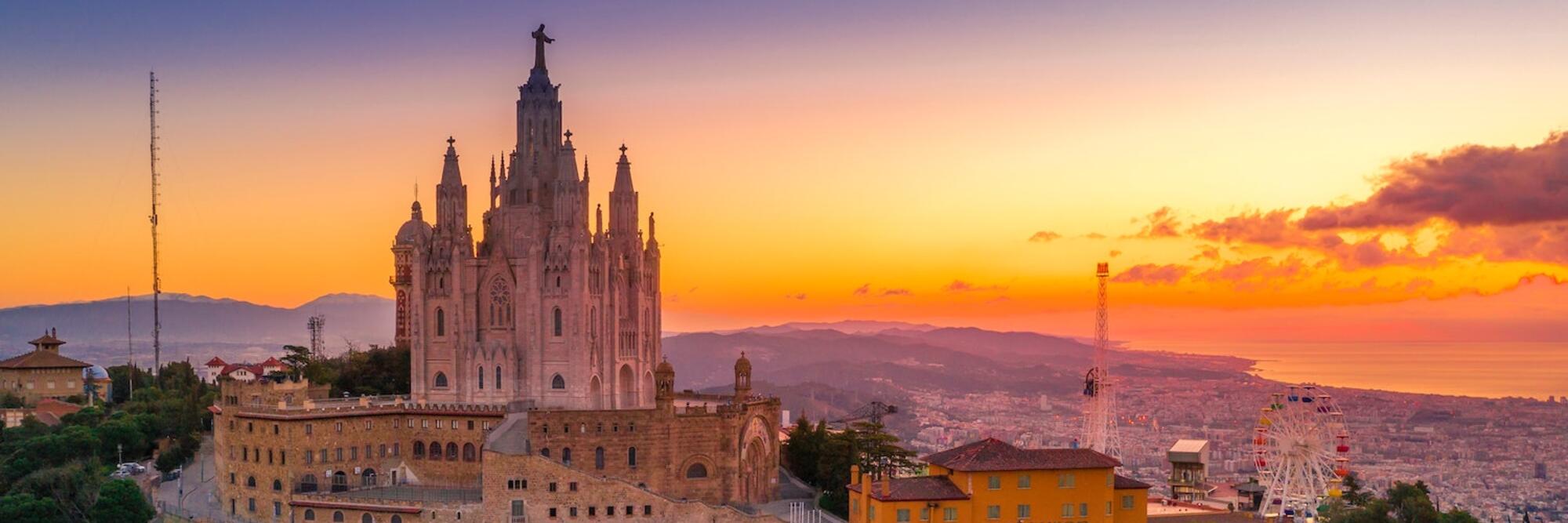Spain is known for its incredible beauty, constantly attracting tourists and expats from all over the world. For a break from the popular tourist hotspots, the places below are waiting to be explored, showcasing the rich and varied history of Spain.
Places to see in Spain
Segovia
Located 90 kilometres (55 miles) north of Madrid, Segovia is considered a world heritage city that dates back to the Roman Empire in 75 BCE. It served as an important trading city during the Middle Ages and is notably the place where Isabel I was proclaimed the queen of Castile. Her marriage to Ferdinand II of Aragon laid the basis for the unification of Spain, as well as their financing and support of Christopher Columbus to sail west. Holding such an important position in the history of Spain, Segovia is certainly a ‘must-see’ when you want to get away from Madrid.
The Roman Aqueducts
Regarded as the ‘Symbol of Segovia’, the Roman aqueduct is a magnificent work of engineering and is one of the most well-preserved aqueducts in the world. Seen that there is no official inscription on the structure, it is thought to have been built during the 1st century AD, but to this day its actual date of construction remains a mystery. It was initially built to transport water from the Fuente Frio River for 14 kilometres over rolling hills and into Plaza Azoguejo in the centre of the city. It stands 28.5m above the ground and consists of 166 stone arches standing on granite ashlars. Also, it is remarkably held by no mortar or cement, only giant stones that are perfectly fitted together in a way that has truly defied the ages.
The Segovia Cathedral
The Jewish Quarter
A peaceful and historic section of Segovia that expresses the city's Jewish past. In the year 1215, there was a small Jewish community that flourished in Segovia, among other parts, for almost 200 years. They brought wealth and somewhat of a golden age to the city by trading wool and textiles, which were considered a commodity during the Middle Ages. But after the defeat of the Moors in 1492, the monarchs of Castile and Leon signed and declared The Edict of Expulsion. This Edict forced Jews to either convert to Christianity or leave the kingdom of Spain. So the Jews in Segovia were forced out of their homes and into the ghettos outside the city walls, thus ending their 300-year presence in the city. Now The Jewish Quarter is a small historic village that runs from Almuzara Street in the centre, to the outside of the city walls where a Jewish butcher existed in 1287– based on historical records. The quarter consists of one-storey houses that are in a way stacked on top of each other, with small allies weaving between them. You can take a pleasant walk through these allies and literally walk through history. You can take a tour of the Covent of Corpus Christi, which served as the main synagogue in Segovia. Or you can stroll through the Jewish cemetery and see the old Jewish-style tombstones and statues dating back hundreds of years. A wonderful thing about the Jewish Quarter is that it is not known by a lot of tourists, so you won't have to worry about high numbers of tourists flooding the village. Most of them don’t think to venture outside the city walls.
The Alcázar
This beautiful castle that sits on top of a steep rocky hill in the old town of Segovia near the Guadarrama mountains, the Alcázar dates back to the 12th century and has been home to many significant events throughout Spain's history. It served as a royal palace for King Alfonso VIII between 1155-1214 and as one of the most favoured residences by the monarchs of the Kingdom of Castile. In 1258, King John II built the ‘New Tower’, which is known as the John II Tower today. Queen Isabel was also enthroned as queen of Castile in the Alcázar in 1479 after news that King Henry IV was killed in Madrid. In 1762, King Charles III used it to found the Royal Artillery School, which remained in operation for approximately one hundred years. Nowadays, when looking at the Alcázar, it truly resembles a fairytale-like castle that may have been built by Walt Disney. It’s considered one of the most visited sites in Segovia and houses many royal works of art dating back centuries. Tourists are allowed access to several parts of the castle, as well as the John II tower, where they can enjoy breathtaking views of the town below.
Downtown Segovia
Very different to downtown Madrid, the centre of Segovia is an experience within itself. The beautiful medieval and gothic infrastructure around every corner transport you back to the days of knights and royalty. One of the places to keep in mind is the Palace of the Count of Alpuente (Palacio del Conde of Alpuente). It is an Arabic-influenced 15th-century building with a beautiful stained-glass window ceiling designed by Carlos Muñoz de Pablos.
Another charming place you do not want to miss is the Church of San Martín. It is considered an icon of Segovia and one of the top most visited sights in the city. You can stroll around and surround yourself with the medieval architecture in St. Martin square (Plaza San Martín), but don't forget to stop by to see this iconic church.
What to eat in Segovia
When it comes to food, Segovia has certainly made its mark in the culinary world. The cochinillo (roast suckling pig) is an iconic dish that is known throughout Spain as well as in circles all over the world. Dating back to the Roman Empire in Spain, it consists of a suckling pig, no more than three weeks old, that is only milk fed. The piglet is then butterflied, brushed with extra virgin olive oil, and roasted to perfection in a traditional oven for several hours. And in accordance with Segovian tradition, it is brought out and cut with a plate, just to show the tenderness of the meat. It is one of the most succulent pork dishes in the world and is surely worth trying.
Another traditional and famous dish in Segovia, especially in the winter, is Bean Stew (Judion de la Granja). They are giant beans cooked in a chorizo and tocino (Segovian Bacon) broth. Traditionally served in a clay plate called a cazuela, this flavourful and comforting dish is a must-try when you're in Segovia.
But if you have a sweet tooth, Segovia certainly doesn’t forget about dessert lovers. A typical Segovian desert is Ponche Segoviano. It is a light, spongy cake layered with cream, then wrapped in a sweet layer of marzipan. It is finally topped with a layer of caramelised sugar that ties everything together beautifully.
This magical and medieval town is full of sights, history, and flavours that draw people from all over the world. So if you have a day off, and would like to go on a little adventure, Segovia would make the perfect day trip away from Madrid.



